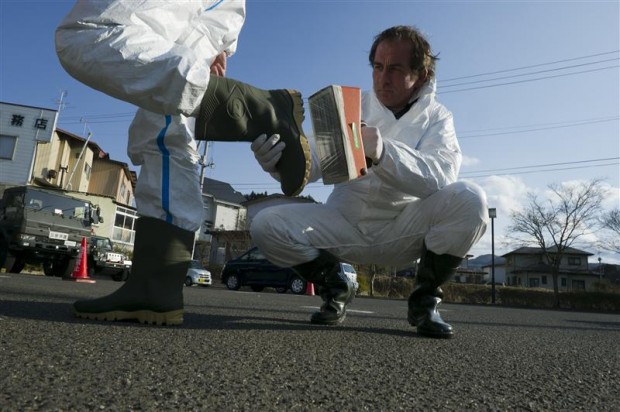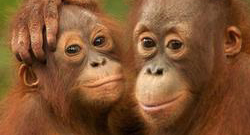Jacob Namminga, one of our radiation safety advisors, spoke to Brian Fitzgerald at our international office, about the radiation monitoring that began on Saturday March 26, in a rural area of Japan to the north west of the Fukushima nuclear plant.
The trip's aim was to asses the true extent of radiation risks to the local population, which has reported radiation levels of up to ten micro sieverts per hour in Iitate village, 20km beyond the official evacuation zone - levels high enough to require evacuation. As told to Brian, here are Jacob's reflections on the trip.
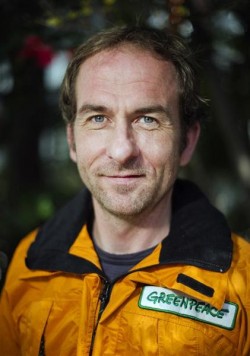 We are staying in a place in Yonezawa, 45km from Fukushima
city called the Smile hotel. It has a giant yellow smiley on it, which
under the circumstances is a bit surreal.
We are staying in a place in Yonezawa, 45km from Fukushima
city called the Smile hotel. It has a giant yellow smiley on it, which
under the circumstances is a bit surreal.
We have Internet, the electricity is working; we have it rather easy compared to some of the people here who are refugees, having had to leave their homes and who are living just a few kilometres away.
We also brought a lot of food in from Osaka and try to eat that and avoid local foods - especially milk.
The other day we visited a community centre, a sports hall where 500 refugees were staying. There were mattresses and cardboard boxes that the people there had arranged to try and create their own space.
But they have no privacy: they all sleep in one common area. Of the 500 refugees there, I was told about 200 were there because of the tsunami, 300 due to the radioactivity.
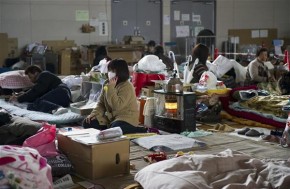
One woman heard we were from Greenpeace and approached asking if we had any information about how safe Fukushima city was. She said she did not trust the information from the authorities.But, because we hadn't recorded our own mesurements yet, I wasn't able to give her any definite information. It was very clear she was scared though. It's not the Japanese way to be angry: everyone is quite calm, almost passive - but they are afraid.
As we found out today, the radiation levels are high in Fukushima city - our measurements confirmed levels that have been reported in newspapers and by the government - in some places so high that you would get your 'maximum annual dose' (if you believe in such things) in about eight days. Therefore, it's strange to see people biking and going about their business.
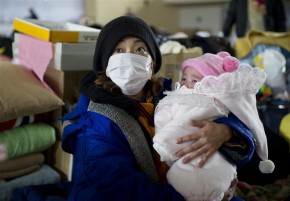
There is food available in the supermarkets. but many empty shelves. The morning before we left, we were in a little shop and they were taking away all the milk and replacing it.
At 9am we set out from Yonezawa, and drove for one and a half hours toward the region where we wanted to make our measurements. We do not stay in the high radiation areas longer than necessary, in order to minimize our own dosages.
Saturday was beautiful day with lots of sun, enough to make my face actually a little red - although that's from solar radiation, not radioactivity from the plant.
We kept our measurement gear on throughout, but had to turn off the audio bleeps on the Geiger counter, as it's constant sound was driving us nuts. But, the alarms of the devices can't be turned off, and in particularly high radiation areas they'd all go off. In one spot we hit such a high reading that we couldn't stop there.
The weather was windy and dry, difficult conditions as the dust and snow can carry radioactive particles. So if we stepped out of the car and managed to get dust or snow on us, these radioactive particles could enter the car with us - leading to radiation travelling even further. Therefore, we moved on quickly.
The police met us at a blockade about 35km out from the Fukushima nuclear plant, where they let us do measurements. Cars were still travelling in and out which didn't appear to be relief workers or firemen: I'm speculating but they could have had permission to enter and collect their belongings. It was not busy, but it wasn't deserted: there were still people going in and out.
My biggest impression of the day was that this is a truly beautiful place - the mountains are breathtaking, and if you don't look at the Geiger counters, it's a nice place to be. But, then you look at the Geiger counters and realise there's a real danger, which cannot be seen with our eyes alone.
Here's a map of the measurements that the team made over the weekend:
View Map of Radiation Measurements by Greenpeace team in a larger map
